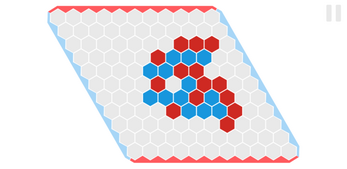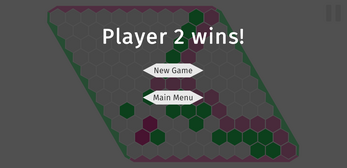Hex
Hex
About Hex
Hex is a two-player strategy game invented by mathematician and poet Piet Hein in 1942 and independently by John Nash in 1948.
Nash proved in 1949 that Hex can't end in a draw - a non-trivial result colloquially called the "Hex theorem", which we now know is equivalent to the Brouwer fixed-point theorem.
Nash also proved that the first player in Hex on a board of any size can force a win. However, the actual winning strategy for 11×11 Hex is still unknown.
In 11×11 Hex, there are approximately 2.4e56 legal positions - about 5 billion times more than in chess!
How to play:
1. Players take turns flipping the hexagonal cells to become their colour.
2. The first player to form a connected path linking the opposing sides of the board marked by their colour wins.
3. The four corner hexagons belong to both adjacent sides.
4. Swap rule: after the first move, the second player may decide to play as the first player from then on.
5. If you can think of a strong response to your own move then look for a better one!
| Status | Released |
| Platforms | HTML5 |
| Author | dolphingarlic |
| Genre | Strategy |
| Made with | Unity |
| Tags | artificial-intelligence, Board Game, Hex Based |





